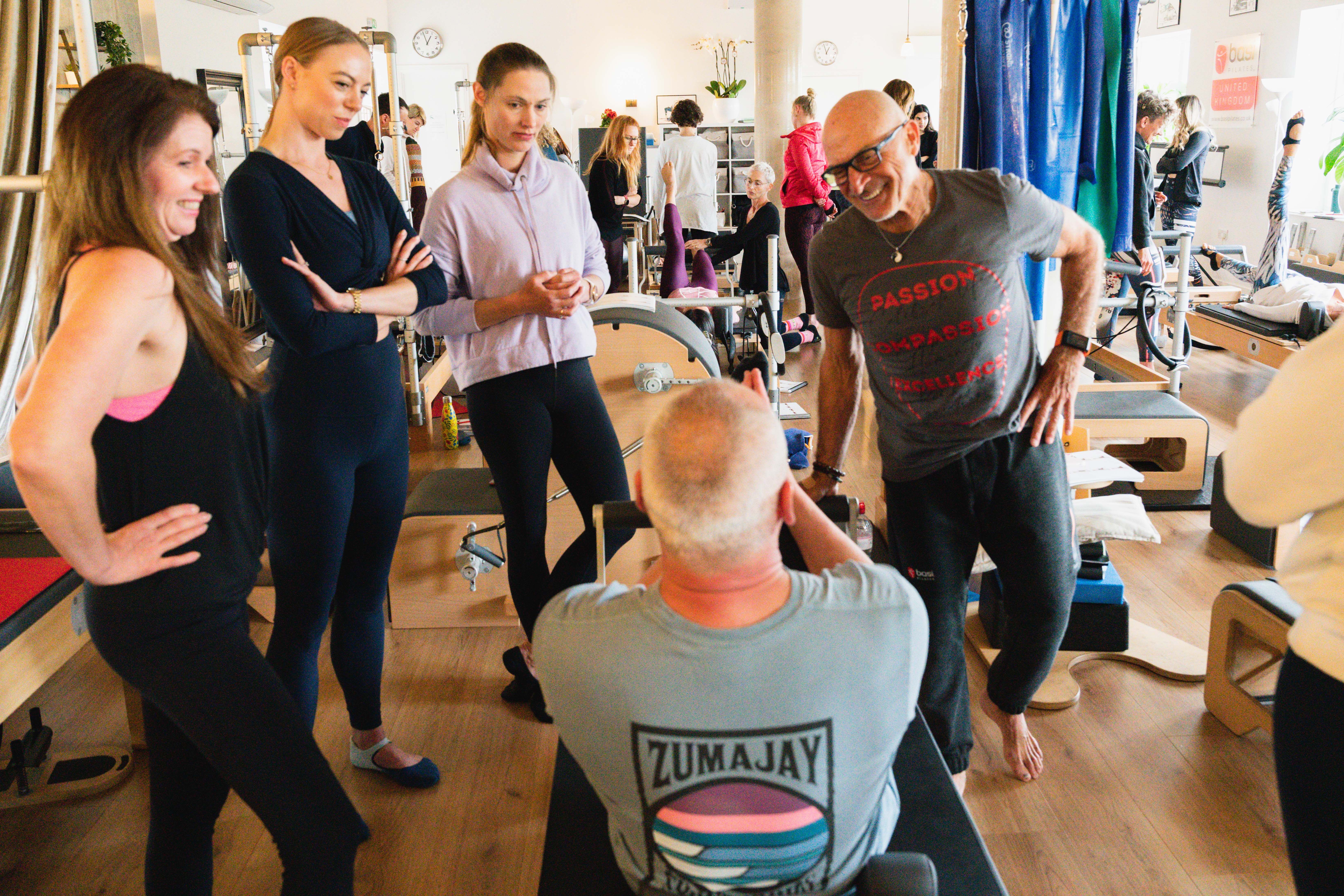What is Pilates?
Discover the benefits of Pilates—core strength, flexibility, and body awareness. Learn how Pilates classes can improve movement, posture, and well-being!
Pilates, originated by Joseph Pilates, emphasizes the balanced development of the body through core strength, flexibility, and awareness in order to support efficient, graceful movement. Many people find that practicing Pilates makes them stronger, leaner, and more able to move with grace and ease. All exercises can be modified to make workouts safe and challenging for a person at any level.
Core strength is the foundation of Pilates exercise. The core muscles are the deep, internal muscles of the abdomen and back. When the core muscles are strong and doing their job, as they are trained to do in Pilates, they work in tandem with the more superficial muscles of the trunk to support the spine and movement.
Developing core strength builds stability throughout the entire torso. This is one of the ways Pilates helps people overcome back pain. As the trunk is properly stabilized, pressure on the back is relieved and the body is able to move freely and efficiently. Pilates encourages a full body integrated workout, which also focuses on arm and leg and gluteal (bottom muscles) strength. Strong, balanced leg and gluteal muscles help to keep a stable pelvis.
Pilates Classes – Centering, Control, Flow, Breath, Precision & Concentration:
These six Pilates Principles are essential ingredients in a quality Pilates workout. The Pilates method has always emphasized quality over quantity, and you will find that, unlike many systems of exercise, Pilates exercises do not include a lot of repetitions for each move. Instead, doing each exercise fully and with precision can yield significant results surprisingly quickly.
Pilates exercises are done either on a mat on the floor (Pilates mat work) or on exercise equipment originally developed by Joseph Pilates. The workout equipment that we use in Pilates generally utilizes pulleys and resistance from the participants own body weight on the machine and graduated levels of springs. The reformer is probably the best-known piece of resistance equipment that you will encounter at a Pilates studio.

Choosing a Pilates studio in London has become strangely difficult. Every corner now promises “dynamic”, “sculpting”, “full-body” something, yet very few places explain what they actually teach or how they keep clients safe. This piece was written to cut through that noise. It looks at the real markers of a good Pilates studio. the sort of details you only notice once you’ve spent years inside education-led spaces and watched clients progress, plateau or give up entirely. If you’ve ever wondered how to judge a Reformer class, a teacher’s training, or whether “all levels” really means all levels, this guide will help you navigate it with a clearer head.

There’s a moment — somewhere around our 40s — when we start noticing the small things. The shoulder that twinges when you reach for the top shelf. The stiffness that greets you before your first coffee. The way sitting too long seems to leave a mark. None of these signals mean decline; they’re simply reminders that movement needs attention, not intensity. And that’s where Pilates quietly works its magic.

There's a peculiar mindset that grips many of us when it comes to exercise: if you can't do it properly—a full hour, perfectly executed, with complete focus—why bother at all? This all-or-nothing thinking keeps studios empty and bodies stuck in patterns of inactivity, particularly among busy professionals commuting through Wimbledon Station or working from home in Raynes Park.




















